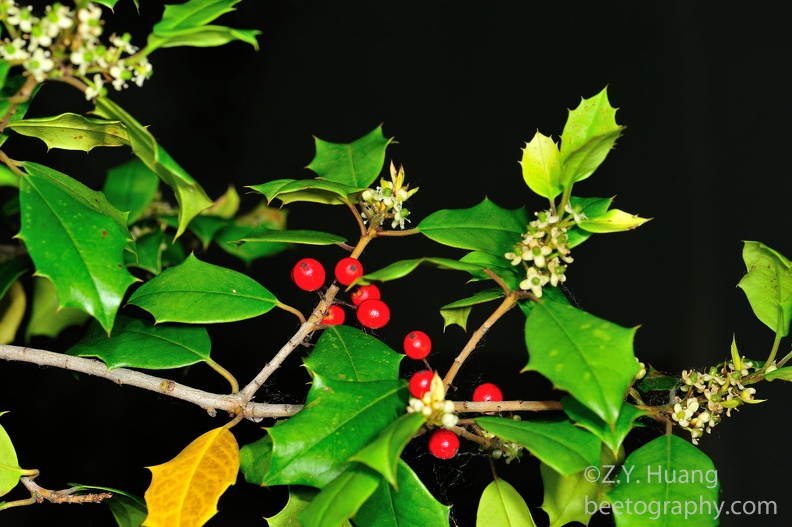By accident I noticed that there are two holly trees in front of the CIPS building (north door) on Saturday (June 6, 2015). I have been meaning to see when this tree flowers and I know bees can make honey from holly in the south (e.g. North Carolina). These two trees were confirmed by MSU botanists (Thank you, Drs. Frank Telewski and Peter Carrington) American holly (Ilex opaca ‘Yule’, Aquifoliaceae).
I saw more bees on this plant than on black locust a few days back. I can see glistening nectar near the base of the stigma, not much (perhaps 1 ul at best, per flower), but it smells nice and it is easy to gather the nectar.
I heard that today it was going to rain, so I came home, got my camera gears and then went back to shoot some bees. I used two wireless flashes (Nikon R1C1) in front of Nikkor 105mm VR micro.
Bees in general stayed 1-2 seconds per flower and this allowed me to get some good shots. I started shooting at 1:53 pm and ended at 2:16, a total of 27 min. I did 55 total shots and got about 15 excellent ones.
1. Details on the small flowers of American holly. Wiki says it is in general dioecious, meaning there are male and female trees but the flowers here seems to be complete. The green ones must be styles (each with a stigma at the top) and there are 4 anthers. I could see honey on the base of the styles.

2. This must be a “female” tree since it has fruits here, from last year, but flowers all had pollen sticking out, so these flowers seemed to be complete or bisexual. However, all the pollen produced are not viable and I did not see honey bees touch them. They seem to be only foraging for nectar.
I tasted one fruit and it was full of tannin and bitter, no wonder they were still there. Birds will use them after a few cycles of freezing and thawing, I was told by wiki.

3. Original photo (not cropped) to show the flowers and leaves.
4. A bit closer.
5. You can see this bee licking right on the base of the green style.

6. This one you can see the proboscis (tougue) at the intersection of green style and white petals.

7. Even closer.

8. Another angle.

This is the first time I shot the photos, processed them and uploaded them to my site on the same day (done last night around 1 am). All the photos had perfect exposure (thanks to the Nikon wireless flashes!) and I did not change saturation or anything, except cropping the last few to see more details. I normally do not sharpen my photos unless I do not have a good one and have to increase sharpness due to a photo being slightly out of focus.


Sorry I could not find a reference either! I will keep looking.
How is that American holly. I see too many points on the leafs. The one I have has one similar point.